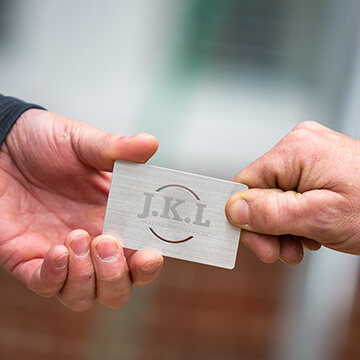Scaffolding is a crucial aspect of construction and maintenance projects. It provides necessary support and access. However, improper use and maintenance of scaffolding can lead to serious safety hazards and project delays. That is why we’ve curated this article for you – to help you ensure that common mistakes are avoided.
We will also share an essential inspection checklist for your scaffolds before each use.
This information will be useful for anyone working on domestic, commercial, or industrial projects in Kent. For tailored scaffolding solutions in Kent, our team at J.K.L Scaffolding Services is here to assist.
If you think speaking to a scaffolding expert directly will help, we are right here for you. From expert advice to tailored scaffolding solutions, we can help with anything you need. Call 0800 061 4800 or email info@jklscaffolding.co.uk today.
7 Common Scaffolding Mistakes To Avoid While Using
1. Poor Foundation
The foundation is the backbone of any scaffold. A stable, level base is essential to prevent the scaffold from tipping or collapsing. Avoid placing scaffolding on uneven or soft ground.
Use base plates, mud sills, or adjustable levelling jacks to ensure a solid foundation. Regularly inspect and reinforce the foundation as needed during the project to maintain stability and safety.
2. Overloading
Exceeding the maximum load capacity of scaffolding is a significant risk. Always refer to load capacity charts provided by the manufacturer.
Distribute loads evenly across the scaffold and never overload with materials or workers. Monitor the load during use and adjust as necessary to prevent structural failure.
3. Inadequate Guardrails And Toeboards
Guardrails and toeboards are critical for preventing falls from heights. Ensure that all scaffold platforms have properly installed guardrails (usually guardrails that meet regulatory height requirements, typically around 1 metre) and sturdy toeboards to prevent tools or materials from falling.
4. Missing Or Faulty Planking
Scaffold planks must be in good condition to support workers and materials safely. Check planks for cracks, warping, or other damage before each use. Replace any damaged or compromised planks immediately to prevent accidents and ensure a stable working surface.
5. Ignoring Weather Conditions
Adverse weather can compromise scaffold safety. Avoid using scaffolding during high winds, rain, snow, or storms. Wet surfaces can be slippery, increasing the risk of slips and falls. Monitor weather forecasts regularly and suspend work if conditions become hazardous.
6. Lack Of Proper Access
Safe access to scaffold platforms is essential for worker safety. Use sturdy ladders, stair towers, or other approved access points. Avoid makeshift or unstable access methods that can lead to falls or accidents.
7. Skipping Regular Inspections
Routine inspections are crucial for identifying potential hazards and ensuring scaffold safety. Inspect scaffolding before each use, paying attention to connections, components, and overall stability.
Schedule regular formal inspections by competent scaffolding experts to comply with safety regulations and address any issues promptly. Our local scaffolding services ensure you get the best inspection practices.
4 Essential Scaffolding Checks Before Every Use
1. Guardrail Verification
Confirm that guardrails are installed correctly. They should be at least 1.1 metres high for standard scaffolding. Ensure they are securely attached and provide continuous protection along all open sides and ends of the platform.
2. Anchorage And Stability
Properly anchor the scaffold to the building or structure using appropriate ties and braces. Scaffolds must be securely tied to the structure at intervals not exceeding 9 metres (30 feet) horizontally and 8 metres (26 feet) vertically. This prevents tipping and ensures stability during use.
3. Load Capacity Assessment
Consult load capacity charts provided by the scaffold manufacturer. Ensure the scaffold can safely support the anticipated loads. According to HSE (Health and Safety Executive), scaffolds should be assumed to be ‘general purpose’ (maximum load 2 kN/m2 or 200 kg/m2) unless informed otherwise by your scaffold provider. Avoid overloading to prevent structural failure.
4. Weather Conditions Evaluation
Avoid using scaffolding during high winds (exceeding 32 km/h or 20 mph), rain, snow, or icy conditions, which can create slippery surfaces and increase the risk of accidents.
5 Best Scaffolding Safety Tips From Experts
1. Training And Certification
Ensure all workers are properly trained and certified in scaffold assembly, use, and safety procedures. Training should cover hazard awareness, fall protection, and emergency protocols.
2. Daily Inspections
Conduct daily inspections before each use. Look for signs of damage, loose components, or environmental factors that could compromise safety.
3. Clear Work Area
Keep the scaffold platform clear of debris, tools, and materials to prevent tripping hazards.
4. Supervision
Assign a competent person to oversee scaffold operations and ensure compliance with safety protocols.
5. Emergency Preparedness
Have an emergency plan in place, including procedures for rescue and evacuation in case of accidents.
How Can Our Team Ensure Scaffolding Efficiency For You?
Our team at J.K.L Scaffolding Services specialises in providing expert scaffolding solutions for domestic, commercial, and industrial projects. We can provide scaffolds for projects of all types and sizes. Safety remains our top concern while creating tailored scaffolds for your unique needs.
With our experienced team, we ensure:
- Compliance assurance: We are committed to regulatory compliance. We stay updated with industry standards and safety protocols, ensuring our scaffolding solutions meet or exceed requirements. Our practices align with Health and Safety Executive (HSE) guidelines and prioritise worker safety and project integrity.
- Quality materials: We source high-quality materials for scaffold construction. From durable planks to secure fittings, our materials undergo rigorous testing to withstand load capacities and environmental conditions.
- Expertise and training: Our team comprises trained professionals with extensive expertise in scaffold installation and maintenance. We invest in ongoing training and development to keep our staff updated with the latest safety practices and industry advancements.
- Customer commitment: At J.K.L Scaffolding Services, customer satisfaction is crucial. We collaborate closely with clients, understanding project requirements and safety concerns. Our responsible approach ensures clear communication and proactive problem-solving, fostering trust and confidence in our scaffolding services.
Arrange your free site survey today. Alternatively, call us 0800 061 4800 to get started.
Contact JKL Scaffolding
Conclusion
Avoiding common scaffolding mistakes and ensuring regular inspections are vital for the safety and efficiency of any construction or maintenance project in Kent. We hope that by following these guidelines and relying on a specialist scaffolding provider like J.K.L Scaffolding Services, you can minimise risks and maximise the effectiveness of your scaffolding operations. As one of the leading scaffolding company in the UK, we pride ourselves on delivering top-notch services for all your scaffolding needs.
Explore our website to learn about our services.
Contact us today to discuss a tailored scaffold for your project. Whether you need commercial scaffolding specialists in London, or domestic scaffolding solutions, we’re here to assist you every step of the way.



